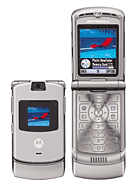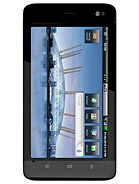Mobile phone evolution: Story of shapes and sizes
Story of shapes and sizes
Weight
Here is a pretty consistent graph for a change. The average weight of the mobile phones has hardly budged an inch over the past decade but if you think that there is no story to be told here you are mistaken.
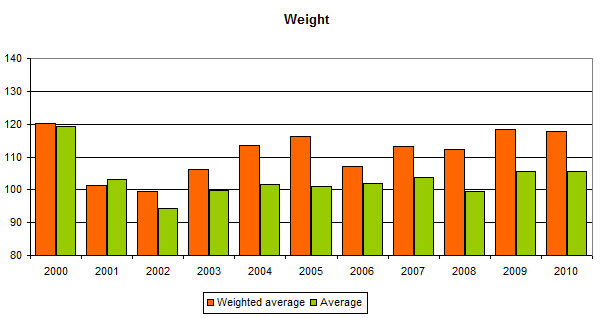
Today's mobile market is all about squeezing the best performance out of components that are ever decreasing in size. A phone with the same feature set as high-end models from 5 years ago could easily be twice as compact and just as light nowadays.
But that's not what the general public really wants. Except for a brief spell in the first half of the decade when a few super minis were all the rage, the best phones have always been the ones with the most features. Siemens did pretty good with their SL55 tiny slider, Ericsson made a serious impact with their T66, but it was Panasonic who took the idea furthest by releasing a bunch of phones not much bigger than a matchbox. GD55, G50 and G51 are the first names that spring to mind.
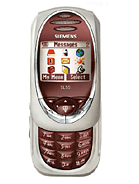
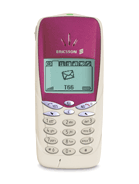
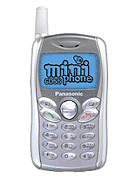
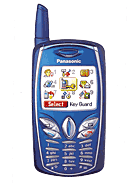
Siemens SL55 • Ericsson T66 • Panasonic GD55 • Panasonic G50
Indeed, people used to be fascinated with all-in-one handsets - today they simply need them. Using the available space to incorporate more radios, more powerful hardware and larger screens is what people want and the manufacturers would be foolish not to listen.
The finish matters too and the use of exclusive materials on the phones takes its toll. Metal weighs more than plastic and everyone loves a bit of steel or tempered glass on their high-end smartphone, don't they?
So why not just put all available features together in a giant phone, some might ask. Well that's not working all that well either. The Nokia Communicators have always enjoyed a certain degree of success but it's only when the mid-sized E71 stepped in that they were able to truly sell millions of them.
So, if there is one area where you shouldn't expect major changes in the future it would be the weight. At a bit over 110 grams, devices have found the golden mean between solid feel, pocket-friendliness and functionality and all future performance boosts will perhaps be driven by the further miniaturization of the components. MicroSIM anyone?
Slim is always sexy
The thickness chart is completely different from the weight - it shows a clear trend. The original Motorola RAZR was the first model to put the emphasis on slimness. In the years to follow, we observe a steady decrease in handsets' thickness. The similar average and weighted average values show that this trend matters regardless of class and price. It holds in both popular and not so popular phones, both high-end and low-end.
We are also noticing an ever-expanding gap between high-end devices and the average phones. You might be thinking that this is just wrong, considering what we said in the previous chapter but there is actually more to this story.
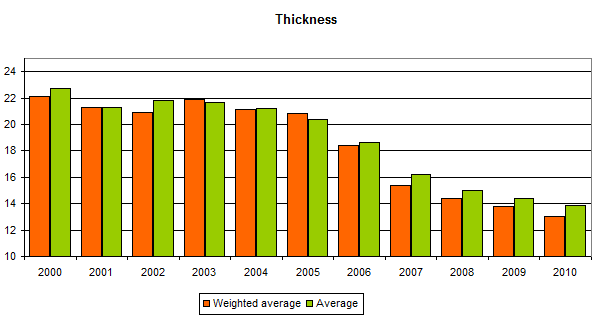
The thing is high-end phones are the ones with larger displays (more on that in a second) and in turn larger surface. So there seems to be enough room to place all those chips without making the device inch thick.
However we suspect that the tendency to make phones slimmer by the day will end soon. The average values will probably drop by another millimeter or two but we just can't see them going further.
A phone thin enough to fit a credit card slot in your wallet just cannot be durable enough. Surely those RAZRs and the Samsung Ultra lineup were impressive, but only because they were so much slimmer than their chubby contemporaries.
Today, the omnipresent iPhone 4 is less than 10mm thick and so is the Samsung Galaxy S. Nine users out of ten will tell you that they don't really need any slimmer. So perhaps high-end smartphone thickness will find its golden mean just like weight.
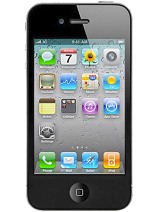
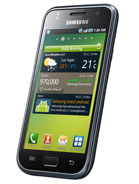
Apple iPhone 4 • Samsung Galaxy S
Display size
Bigger is always better when it gets to touchscreen and high-end models. Let's be honest here - did you really expect anything different? We certainly didn't.
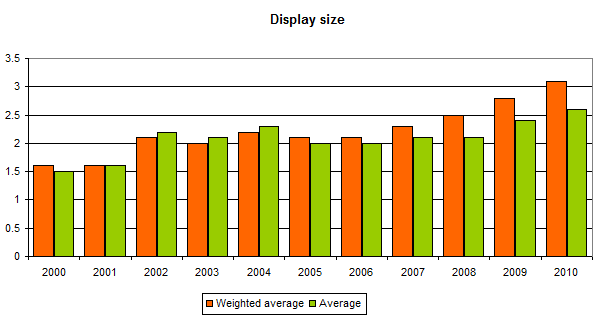
There was a point in the development of mobile phones when the low screen resolution made size increase pointless. That was soon overcome and now we are enjoying 4-inch units with enough pixel density to make them look as sharp as possible.
Of course, Steve Jobs will tell you that the iPhone 4 retina display is a whole lot better with its highest-ever pixel count squeezed on a 3.5" unit and, for a change, he will be right. But the difference is not visible in most regular use scenarios, so the iPhone 4's display would've been just as impressive (perhaps even better) was it a bit bigger. But that would've raised other ergonomic issues so there is no telling whether it would have benefited the device.
Phone screens keep growing and with touchscreen still having some unconquered corners of the mobile world it would continue to do so for a while longer.
We are not sure however if there is a point in going any further than the current level. The HTC HD2 is already stretching it and even though 5" tablet-phone crossovers are already available we wouldn't be as bold as to predict that this will become the norm.
Reader comments
- Teres4
- 05 May 2023
- LdI
We need 2023 version of this arcticle
- mariws
- 09 Sep 2017
- 8BI
Reading this, 7 years later, it's amazing. You rock guys.
- steve
- 04 Dec 2013
- sR3
I had to laugh at the thing about 5" phones not being normal

